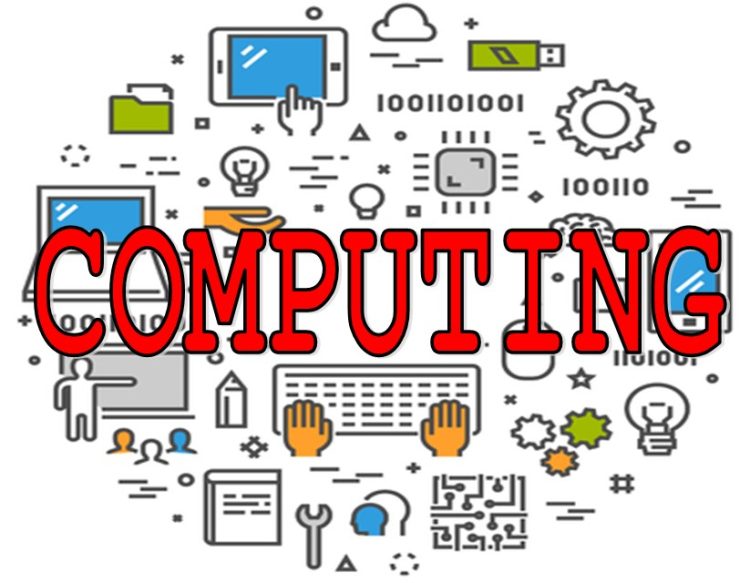Introduction: The End of an Era, the Beginning of Another
For more than half a century, the progress of computing power was predictable, guided by Moore’s Law—the empirical observation that the number of transistors on a microchip doubles roughly every two years. This exponential increase defined the rhythm of the digital revolution. But as transistors approach atomic scales and traditional silicon faces physical limitations, we stand on the threshold of a new era. The next generation of computing power will not merely rely on faster chips; it will emerge from a confluence of architectures, intelligence, and integration, forming what can be called an intelligence infrastructure for humanity.
This infrastructure will redefine how computation is distributed, how energy is consumed, and how intelligence itself is produced. From quantum computing and neuromorphic chips to heterogeneous AI accelerators and photonic processors, the landscape of computing is evolving in unprecedented ways. This article explores that transformation — tracing the decline of Moore’s Law, the rise of post-silicon paradigms, and the construction of the global computing fabric that will underpin the intelligent age.
1. The Decline of Moore’s Law: Physics Meets Economics
For decades, the semiconductor industry thrived on a virtuous cycle: smaller transistors meant faster chips, lower costs, and greater energy efficiency. However, this trend has slowed dramatically since the 2010s.
1.1 The Physical Limits
As transistors shrink below 3 nanometers, quantum tunneling effects disrupt the reliable flow of electrons. Heat dissipation, leakage current, and lithography costs all skyrocket. The once-linear trajectory of computational growth has flattened.
1.2 The Economic Limits
Even if physics could be overcome, economics cannot be ignored. Fabricating chips at the bleeding edge—using extreme ultraviolet lithography (EUV)—requires investments of tens of billions of dollars. The cost per transistor is no longer decreasing, and the benefits of miniaturization are diminishing.
1.3 The Paradigm Shift
Rather than relying on transistor density alone, computing progress now hinges on architectural innovation. Companies are turning to specialized accelerators, chiplet-based designs, and distributed computing frameworks to sustain performance gains. In other words, the age of general-purpose computing is giving way to purpose-optimized intelligence.
2. Beyond Silicon: The Rise of Heterogeneous Architectures
2.1 The CPU Is No Longer the Center
Once the dominant force of computation, the CPU has become only one component in a much larger ecosystem. Modern systems integrate GPUs for parallel workloads, TPUs for deep learning, and FPGAs for adaptable logic.
This diversification of architectures—called heterogeneous computing—is a defining feature of the post-Moore era. Instead of scaling a single chip vertically, the industry is scaling horizontally, orchestrating multiple types of processors optimized for specific tasks.
2.2 Chiplets and Modular Design
The concept of chiplets—small functional modules that can be interconnected like building blocks—represents a new paradigm. It enables manufacturers to combine different process nodes and materials within a single package, enhancing flexibility and yield. AMD’s EPYC processors and Apple’s M-series chips exemplify this modular approach.
2.3 Photonic and Neuromorphic Computing
Photonic computing replaces electrons with photons, enabling higher bandwidth and lower latency. Meanwhile, neuromorphic chips mimic the structure of the human brain, processing information through spiking neural networks that consume minimal power. Together, they hint at a future where computation is both faster and more energy-efficient, transcending the silicon barrier.
3. Quantum Computing: Power at the Edge of Physics
If Moore’s Law was about adding transistors, quantum computing is about redefining what computation means. By leveraging the principles of superposition and entanglement, quantum computers can represent and process information in fundamentally different ways.
3.1 Quantum Bits and Parallelism
Unlike classical bits that are either 0 or 1, qubits can exist in both states simultaneously. This allows quantum computers to evaluate many possibilities in parallel, exponentially increasing their problem-solving potential.
3.2 Algorithms and Use Cases
Quantum computing holds immense promise in cryptography (Shor’s algorithm), optimization (quantum annealing), and molecular simulation (quantum chemistry). These capabilities could transform industries from pharmaceuticals to finance.
3.3 Challenges and Reality Check
Yet, practical quantum computing remains elusive. Qubits are fragile, prone to decoherence, and require near-absolute-zero environments. While progress is accelerating—IBM, Google, and startups like IonQ and Rigetti are all making breakthroughs—the technology may take a decade or more to reach commercial maturity.
4. AI as the New Driver of Computing Power
The emergence of artificial intelligence has fundamentally changed the relationship between algorithms and hardware. Traditionally, software adapted to hardware constraints. Now, hardware is being reimagined to meet the demands of AI workloads.
4.1 The Era of AI Accelerators
Deep learning requires massive parallel computations for matrix multiplications. GPUs, once designed for rendering graphics, have become the backbone of AI. Today, purpose-built AI accelerators—such as Google’s Tensor Processing Units (TPUs) and NVIDIA’s Tensor Cores—are optimized for neural network operations, drastically improving energy efficiency and speed.
4.2 Data-Centric Computing
The bottleneck in modern computing is no longer raw processing power, but data movement. Fetching data from memory consumes far more energy than computation itself. This has led to the development of processing-in-memory (PIM) architectures, where data is processed where it resides, reducing latency and power use.
4.3 Algorithm-Hardware Co-Design
AI has blurred the boundaries between software and hardware. Neural network architectures are now co-designed with custom silicon to achieve optimal performance. This synergy marks the rise of a computational ecosystem, rather than isolated machines.

5. The Energy Dimension: Computing Meets Sustainability
The next frontier of computing power is not just about speed — it’s about sustainability. Global data centers already consume more electricity than many countries. As AI workloads explode, the energy cost of computation threatens to become unsustainable.
5.1 The Carbon Footprint of Intelligence
Training large AI models like GPT or Gemini requires thousands of GPUs running for weeks, consuming megawatt-hours of energy. The environmental cost is significant, raising concerns about the scalability of intelligence.
5.2 Green Computing Initiatives
To address this, companies are investing in renewable-powered data centers, liquid cooling systems, and AI-driven energy optimization. Technologies like photonic interconnects and carbon-aware scheduling further reduce the ecological footprint of computing.
5.3 Toward Energy-Proportional Computing
The ultimate goal is energy-proportionality—systems that consume energy in direct proportion to their workload. Achieving this will require breakthroughs in both hardware efficiency and software orchestration, integrating energy metrics as first-class constraints in system design.
6. Global Computing Fabrics: The Infrastructure of Intelligence
Computation is no longer confined to chips—it has become a planetary-scale infrastructure. From cloud to edge to IoT, intelligence is now distributed across layers.
6.1 Cloud–Edge–Device Synergy
The cloud provides massive centralized computing power, while edge devices offer low-latency processing near data sources. This hybrid model reduces bandwidth costs and improves responsiveness, enabling autonomous vehicles, smart factories, and AR/VR systems.
6.2 The Rise of Compute as a Utility
Just as electricity transformed industry in the 20th century, computing power is becoming the essential utility of the 21st. Countries are investing in national computing grids—China’s “Eastern Data, Western Computing” initiative, Europe’s GAIA-X, and the U.S. CHIPS Act—all reflect this strategic imperative.
6.3 Data Sovereignty and Infrastructure Competition
As computing becomes geopolitical, nations are racing to secure supply chains for chips, data, and AI models. The competition for computing power is now a competition for sovereignty in the digital era.
7. The Intelligence Infrastructure: A New Paradigm
The convergence of quantum, neuromorphic, and AI-driven architectures signals the emergence of a new computing paradigm—intelligence infrastructure. This infrastructure will:
- Integrate heterogeneous processors seamlessly.
- Balance computation between cloud, edge, and devices dynamically.
- Optimize itself through machine learning.
- Operate sustainably, powered by green energy.
In this vision, computing becomes autonomous, adaptive, and omnipresent—a living network that evolves alongside human society.
Conclusion: Redefining Power in the Age of Intelligence
The story of computing power is no longer a simple continuation of Moore’s Law. It is a story of diversification, integration, and transformation. The next era will not be measured solely in FLOPS or transistor counts, but in how effectively intelligence is generated, distributed, and sustained.
We are witnessing the birth of a new technological ecosystem—one where computing power becomes the foundation of civilization itself, akin to electricity or language. As we build this intelligence infrastructure, the ultimate challenge will be not only to expand computational capacity but to align it with human values, sustainability, and the collective good.











































